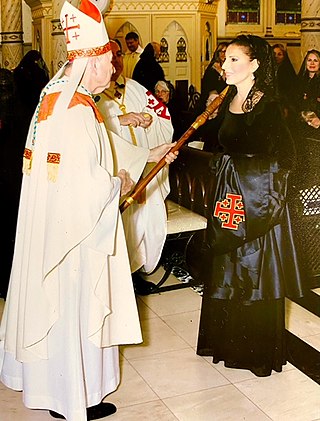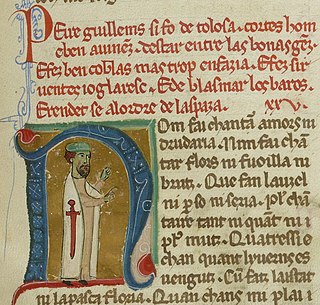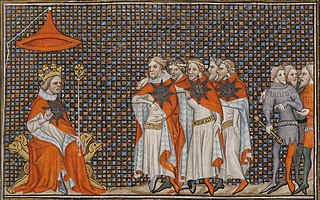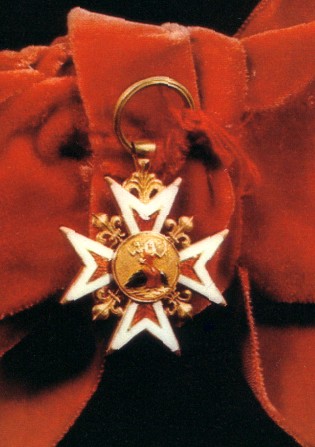Sources
- Gustav Adolph Ackermann, " Ordensbuch, Sämtlicher in Europa blühender und erloschener Orden und Ehrenzeichen ". Annaberg, 1855, p 210 n°91 "Orden des Windspiels" – Google Books (Former orders of France : p. 205–214)
The 'Order of the Greyhound' was founded in 1416 in the Duchy of Bar. One also called this chivalric order, the "Order of the Faithfulness"
The order is called "Order of Hubert" since 1423. This knighthood order was founded as a knightly company for mutual love, loyalty and defense and had as insignia a greyhound with the motto "Tout en" on the collar.
The order was settled, at its establishment, for a period of five years, but flourished, favored by the kings of France until the French Revolution. In Frankfurt Louis XVIII, France's king in exile, reorganized the Order of Hubert and it was now called "Hunting Order of St. Hubert", until July 29, 1830 when it was abolished with all other former French orders.
Ackermann mentions this knighthood order as a historical order of France.
A dynastic order, monarchical order, or house order is an order under royal patronage. Such an order is bestowed by, as a legitimate fons honorum, a sovereign or the head of a once-sovereign ruling family. These are often considered part of the cultural patrimony of the ruling family. Dynastic orders were often founded or maintained to reward service to a monarch or their subsequent dynasty.

Dame is an honorific title and the feminine form of address for the honour of damehood in many Christian chivalric orders, as well as the British honours system and those of several other Commonwealth realms, such as Australia and New Zealand, with the masculine form of address being Sir. It is the female equivalent for knighthood, which is traditionally granted to males. Dame is also style used by baronetesses in their own right.
The Noble Order of Saint George of Rougemont was a baronial order of chivalry established around 1440 in the Free County of Burgundy. From the 15th through the late 18th centuries it enjoyed the protection of the Dukes of Burgundy and later the French kings. It was abolished in the wake of the French Revolution and became extinct after the death of the last knight in 1869.

The Order of the Ancient Nobility, also called Order of the Four Roman Emperors or Ancient Order of Saint George, is a historic chivalric order, first established in 1308. It was re-founded as a secular community on 6 December 1768 by Count Philipp Ferdinand of Limburg-Stirum.

The Ordre du Croissant was a chivalric order founded by Charles I of Naples and Sicily in 1268. It was revived in 1448 or 1464 by René I, king of Jerusalem, Sicily and Aragon, to provide him with a rival to the English Order of the Garter. René was one of the champions of the medieval system of chivalry and knighthood, and this new order was neo-Arthurian in character. Its insignia consisted of a golden crescent moon engraved in grey with the word LOZ, with a chain of 3 gold loops above the crescent. On René's death, the Order lapsed.

The Order of the Faith and Peace or Order of the Sword was a military order in Gascony in the mid-13th century.

The Order of the Star or Company of the Star was an order of chivalry founded on 6 November 1351 by John II of France in imitation of the Order of the Garter founded in 1348 by Edward III of England. The inaugural ceremony of the order took place on 6 January 1352 at Saint-Ouen, from which it is sometimes called the Order of Knights of the Noble House of Saint Ouen.
This page is a list of the orders of chivalry and orders of merit awarded by France, in the order they were established or incorporated in France, and their origins.
The Order of the Lion was an order of knighthood set up by Enguerrand I of Coucy, to keep alive the memory of his killing a dangerous lion. It was short-lived and was forgotten after its founder's death.

The Royal Order of Saint Hubert, or sometimes is a Roman Catholic dynastic order of knighthood founded in 1444 or 1445 by Gerhard VII, Duke of Jülich-Berg. He sought to commemorate his victory over the House of Egmond at the Battle of Linnich on 3 November, which is Saint Hubert's day.
The Order of the Crown is an order founded by the northern French nobleman Enguerrand VII, Lord of Coucy in 1378 and belongs to the historical orders of France.
The Order of the Belt of Hope was a knighthood order which was founded in 1389 by King Charles VI of France and dedicated it to "Our Lady who bring back home the lost hunters".
The Order of the Passion of Christ was a French knighthood order which was founded in 1380 by King Richard II of England and in 1400 by his father-in-law king Charles VI of France. It was a crusader knighthood.
John I, Duke of Bourbon founded in 1414 the Order of the Golden Chains.

The Order of the Ladies of the Cord, was a ladies order founded by the French queen Anne of Brittany in 1498. This rope with knots had been added by her step-grandfather Francis I, Duke of Brittany to his arms in honor of St. Francis its patron saint and her father Francis II, Duke of Brittany had continued the emblem. The order was founded after the death of her husband king Charles VIII. The choice of name is not clear. Some sources speak of the node in the Scourge of the Savior, others from the cord of the sacred Francis of Assisi and still others of deliverance from the pressing duty of the unfortunate and involuntary marriage of Charles and Anna.
In 1369, Louis II "the Good", duke of Bourbon founded the Knights of the Golden Shield to commemorate the release from English captivity of noble hostages held along with the king John II of France. This release came in 1369, three years after the death of the captive king.

The Order of the Yellow Ribbon was founded in 1600 in Nevers by French-Italian nobleman Charles III, Duke of Nevers, nephew of the French king Henry III, and knights would be imposed very peculiar tasks.

The Order of Our Lady of Mount Carmel was founded in 1608 by Pope Paul V at the request of King Henry IV of France.

The Order of the Broom-cod, is believed to have been founded in 1234 by the French king, St. Louis IX, to commemorate his wedding with Margaret of Provence, daughter of Ramon Berenguer IV, Count of Provence, and her coronation. Other sources mention Charles VI the Beloved as the founder.
The Order of the Knights Bannerets was a French knighthood mentioned in a biography of Sir Robert Bruce Cotton, 1st Baronet (1570-1631) by Thomas Smith.